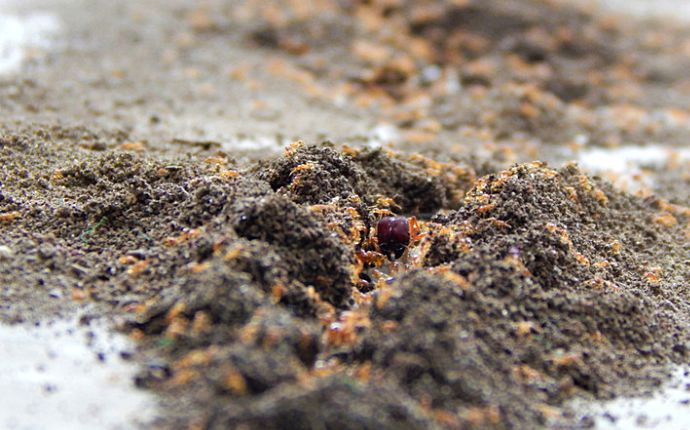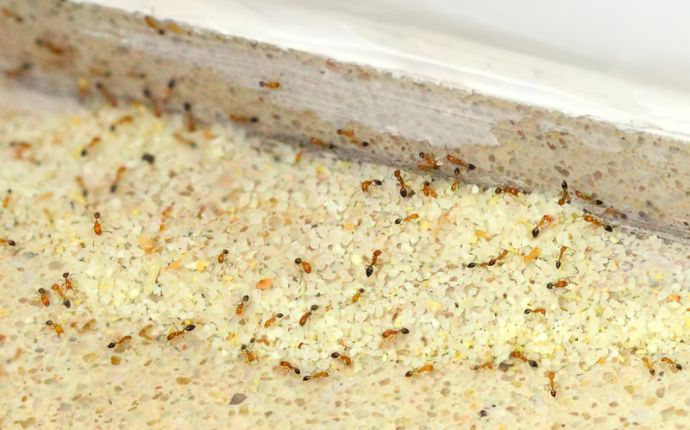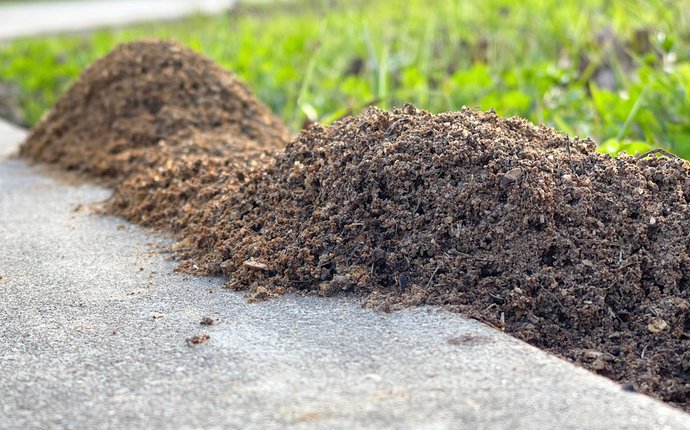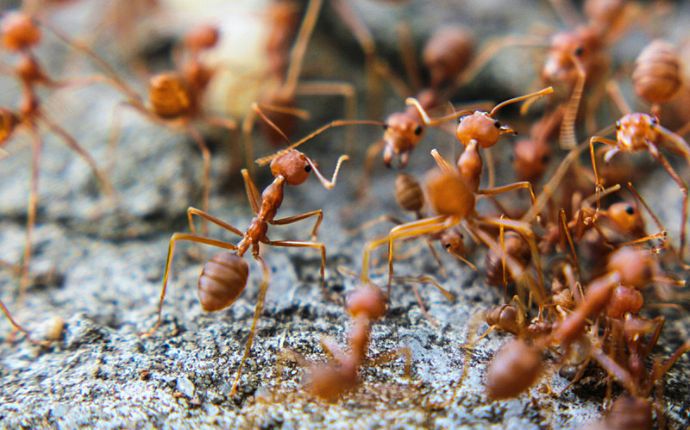Fire ants are a common pest problem in Baltimore and throughout the southeastern parts of the United States. Their stings are painful and sometimes life-threatening.
There are steps you can take to prevent fire ants from hiding around or entering your home. And if the measures below don’t work, our team at Phenom Pest Protection is ready to step in.
What You Need to Know About Fire Ants
Here are some of the essentials about fire ants.
General Appearance
Like most insects, fire ants have an exoskeleton. They are often red, black, and brown, with six legs. Worker ants have round heads and a mandible, as well as an abdominal stinger.
Origin
Fire ants originated from the central parts of South America. Around 1930, these ants began to spread across the United States. Common ways fire ants came to the states were by trucks, trains, and other methods of travel and shipping.
Reproduction and Life Cycle
Fire ants develop through egg, larvae, pupae, and adult stages. Winged female and male fire ants fly up from the ground and mate. Shortly after, the male ant dies, and the female ant breaks off her wings and becomes the queen of a new colony.
The queen ants can live for seven years and produce up to 1,000 eggs per day. Monogyne colonies have one fertile queen that lays all the eggs, while polygene colonies have several queens that lay eggs.
Diet and Habits
Fire ants eat an omnivorous diet. Adult worker fire ants feed on animal or vegetable foods like insects, honeydew from aphids, and dead animals. These ants are aggressive, stinging an animal many times.
Signs of a Fire Ant Infestation

Common signs of a fire ant infestation include piled dirt or sand in your yard. Check around these mounds for discarded wings as well.
You may also see red ants surrounding leftover food and visible ants in garbage, grass, or cracks. Even if you don’t see the ants, you may find red, itchy bumps on the skin after being stung.
How to Control Fire Ants
There are many ways to go about controlling a fire ant infestation on your property.
Ecological Approach
- Baits
- Treatments using baits involve a two-step method of broadcast baits and individuals mound treatents.
- Unfortunately, this method is counterproductive because it also kills native ant colonies.
- Least Toxic Pesticides
- Avermectin, derived from soil fungus, works best as a broadcast treatment.
- Hydramethylnon and sulfluramid kill fire ants by preventing them from converting their food to energy.
- Fenoxycarb, methoprene, and pyriproxyfen prevent proper worker ant development.
- Organic Insecticides
- Boric acid and diatomaceous earth kill ants but may not eliminate an entire colony.
- Rotenone, nicotine sulfate, d-limonene, and pyrethrins are ingredients in insecticides that kill ants.
- Spinosad is a toxin originating from bacterial fermentation that attacks the nervous system. Manufacturers use it in ant bait.
When purchasing insecticides, those certified by the Organic Material Review Institute (OMRI) are best.
Physical Treatments

- Excavation
- When excavating hill mounds, applying baby powder or talcum prevents them from coming back up.
- Scalding Hot Water
- Slowly pouring scalding water on mounds helps to kill fire ants. It can be dangerous, though, as it presents a burn risk.
- Submerging Mounds
- Drenching fire ant mounds with a solution containing citrus oil can kill some ants.
Fire Ant Control Myths

Many known “home remedies” are not highly effective in killing fire ants. These are the most common myths:
- Club Soda/ Sparkling Water: An ineffective method because this only drowns a few ants.
- Grits: The idea that they will eat grits, swell, and explode is a myth.
- Wood Ashes or Soap: Some believed these removed the wax layer protecting the ant’s body, but this is a myth.
Tips for Fire Ant Prevention
Preventing fire ants starts with cleaning up leftover food and spills. Keep garbage outside and clean your home often to prevent insects and pests from entering.
Fixing pipes or other holes around your home helps prevent fire ants from getting inside. Sealing up cracks and crevices with a caulking gun also keeps them out.
How to Get Rid of Fire Ants
Certified pest control professionals like Phenom Pest Protection are here to help. Our trained professionals start by conducting a thorough inspection of your property. They then provide pest control plans suited to your specific needs.
The best time to get rid of and control these pests is now. Reach out to us today to get started!





